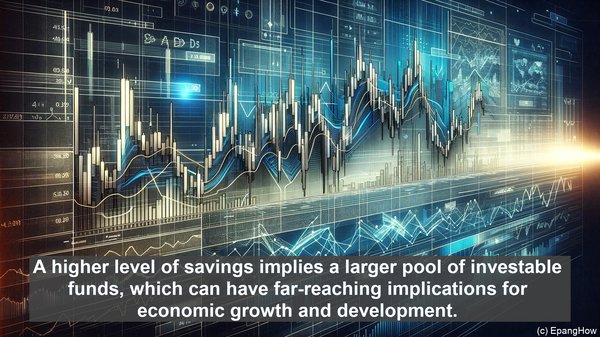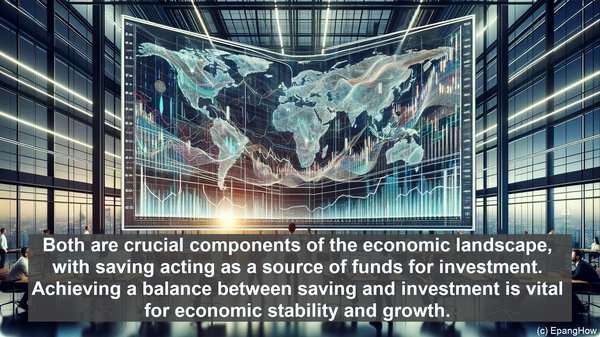Introduction: The Macro Perspective
Hello everyone! Welcome to this macroeconomics article. Today, we’ll be exploring the intriguing distinction between saving and investment. While these terms might seem similar, they carry distinct meanings in the realm of economics. So, let’s dive in!

Defining Saving: A Prudent Act
When we talk about saving, we refer to the act of setting aside a portion of income or resources for future use. It’s essentially a form of deferred consumption. Saving can take various forms, such as depositing money in a bank, investing in low-risk assets, or even stockpiling resources. From an individual’s perspective, saving is often driven by the desire for financial security, the need to meet future expenses, or to fund significant purchases like a house or education.
The Role of Saving in Macroeconomics
In the broader macroeconomic context, saving plays a crucial role. It acts as a source of funds that can be channeled towards investment, both domestically and internationally. When individuals or entities save, they essentially contribute to the pool of funds available for investment. This pool, often referred to as ‘savings,’ is a critical component of a nation’s capital stock. A higher level of savings implies a larger pool of investable funds, which can have far-reaching implications for economic growth and development.
Understanding Investment: Building for the Future
While saving is about setting aside resources, investment revolves around utilizing those resources to generate returns or create assets. Investment can take various forms, such as purchasing machinery for a factory, constructing infrastructure, or even funding research and development. From a macroeconomic standpoint, investment is a key driver of economic activity. It not only creates employment opportunities but also enhances productivity, leading to overall economic growth.
The Relationship: Saving and Investment
In an ideal economic scenario, saving and investment are in equilibrium. This means that the level of saving matches the level of investment. However, this equilibrium is not always achieved. Factors such as interest rates, government policies, and consumer behavior can influence the saving-investment balance. For instance, during periods of low interest rates, individuals might be more inclined to invest rather than save. On the other hand, if there’s a lack of investment opportunities or economic uncertainty, saving might increase.

Implications for Economic Stability
The interplay between saving and investment has significant implications for economic stability. A mismatch between saving and investment can lead to imbalances. For example, if investment exceeds saving, it can result in a trade deficit or even inflation. On the other hand, if saving surpasses investment, it can lead to a lack of economic activity, potentially causing a recession. Hence, policymakers often strive to maintain a balance between these two variables to ensure a stable economic environment.
